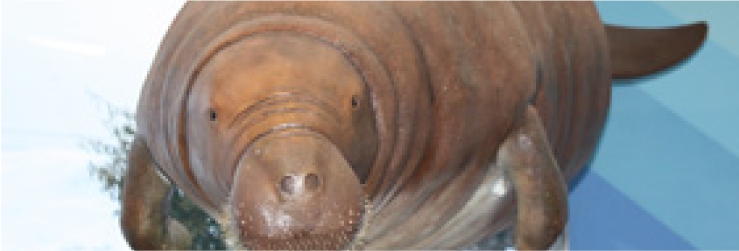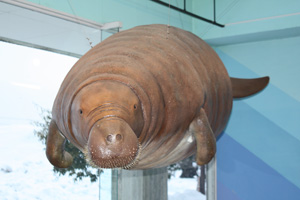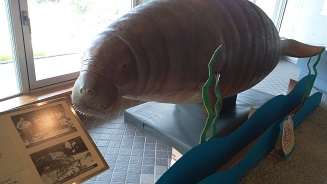
Yamagata Sea Cow (Dusisiren dewana)

Yamagata Sea Cow (Dusisiren dewana)
During the summer vacation of 1978, two six graders from Oe-machi Municipal Aterazawa Elementary, Masatoshi Watanabe and Masahiro Saito discovered what seemed to be the fossils of a huge animal on the riverbed of the Mogami River. Upon authentication by Dr. Domning (Howard University) from the US, the fossils were identified as the remains of a large manatee (sea cow) from approximately eight million years ago. Fossils of sea cows are rarely found in Japan, making it a very invaluable discovery. It was named Yamagata Daikaigyu (literally, “Yamagata great sea cow”). A nickname of “Puku-chan” was also given to it chosen from the public.

▲Puku-chan, the Yamagata Sea Cow

▲This discovery tells us that this area was under the ocean eight million years ago



